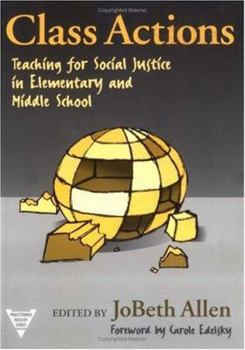Class Actions: Teaching for Social Justice in Elementary and Middle School
This volume provides vivid pictures of classrooms whose teachers have made education for social justice central to their curriculum. While the goal may be idealistic, these class actions are profoundly practical. Readers will see familiar structures used in innovative ways, such as
an integrated thematic study of discrimination in U.S. history that helps children examine their own prejudices the involvement of students with learning difficulties in developing their own IEPs the use of journals, class discussions, and team meetings to prompt self-examination and challenge assumptions the study of a "poor" character in a novel that helps students examine their own class privilege. Written as first-person narratives with the voices of teachers and students, this book invites readers into urban and rural, elementary, middle school, and teacher education classrooms to experience a wide variety of ways to teach "justice for all."Format:Paperback
Language:English
ISBN:0807738565
ISBN13:9780807738566
Release Date:January 1999
Publisher:Teachers College Press
Length:169 Pages
Weight:0.64 lbs.
Dimensions:0.5" x 6.1" x 9.1"
Customer Reviews
0 rating





